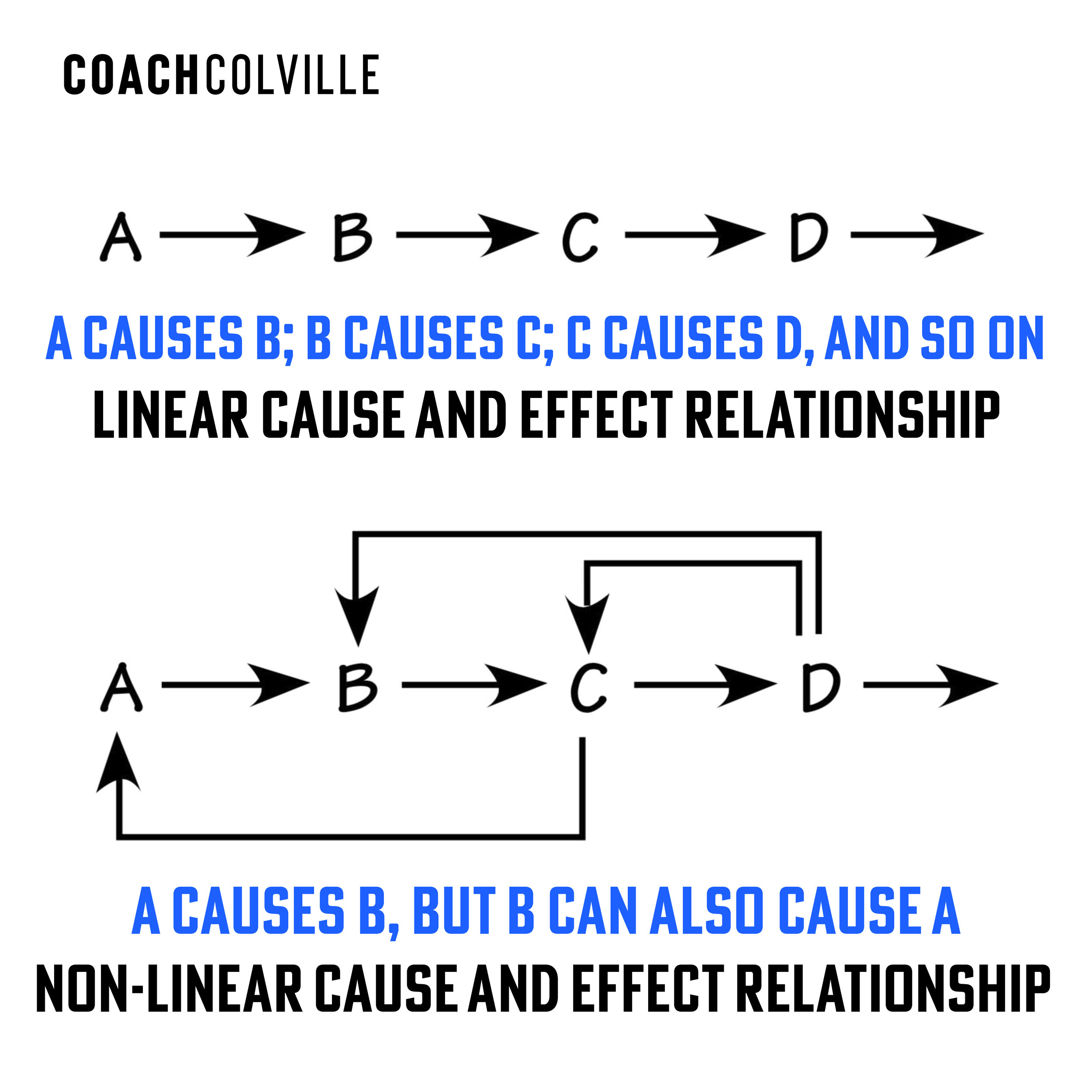"correlation does not imply causation" refers to the inability to legitimately deduce a cause-and-effect relationship between two variables solely on the basis of an observed association or correlation between them.
Simple problems have linear cause and effect relationships.
Complex problems have non-linear cause and effect relationships which are every problem within the human body!
Whenever we try too hard to solve a complex problem – and if we apply simple linear cause and effect solutions – we make the problem worse! Called the cobra effect.
Example A…Athlete injury’s her hamstring sprinting…”the athlete clearly didn’t have strong enough eccentric hamstring strength, so let’s do loads of nordics to build eccentric strength”
This is an example of simple linear cause and effect applied to a VERY complex problem…what about technical factors - what if the athlete touched the ground way in-front of there centre of mass increasing load through the hamstring…what if the hamstring contraction type is actually isometric during terminal swing in sprinting (1)…maybe we have it all wrong anyway…maybe hamstring injuries have nothing to do with eccentric loading and the mechanics in sprint running. Maybe hamstring injuries occur because of a ‘loss’ of motor control, a ‘lack’ of focus when sprinting (2)…due the fact this is a complex problem it is a combination and interconnection between previous injury, fatigue, muscle architecture, core stability, strength and biopsychosocial issues - not solely down to one isolated factor.
We simply cannot say it say it is down to one thing due to the very fact this is a COMPLEX problem and that is due to the fact these problems consist of many different and interconnected parts.
‘Linear causality implies that cause and effect follows a straight path (i.e. it’s linear). Because of this linearity, the effects are determinate in that there is a direct link between the cause and effect which flows in a unidirectional fashion; the cause and effect stream is sequential and the same cause will always lead to the same effect. Linear systems are proportionate; the magnitude of cause will produce an equal effect’ (3).
Complex problems can be causative; it’s just we can only understand the cause and effect in hindsight.
Example B…we assume that people and companies with lot of social followers are reputable, being a reputable person or company is down to a lot of factors so how we deduce this to a simple linear cause and effect.
Example C…we see someone online who has a brilliant figure and they currently train in a CrossFit style…we assume they got this figure training in this manor...what if they did bodybuilding for 10 years prior…what if they are on performance enhancing drugs…what if genetically they have an elevated hormonal response to this certain training modality…we cannot assume they got to where they are by the way they currently train I.e simple linear cause and effect as it’s a complex problem.
Example D…someone cannot achieve squat depth due to ‘ankle mobility’…so we target training to increase ankle dorsiflexion…but what if this is actually a compensatory strategy making up for a lack of stability somewhere else within the system? Is the athlete’s anatomy just designed this way?
‘We often overestimate our ability to influence the process and determine the outcome – when all we can do is try to influence the distribution of possibilities.’ (3)
(1) Van Hooren B, Bosch F. Is there really an eccentric action of the hamstrings during the swing phase of high-speed running? part I: A critical review of the literature. J Sports Sci. 2017 Dec;35(23):2313-2321.
(2) Herzog W. Eccentric vs. concentric muscle contraction: That is the question. J Sport Health Sci. 2017;6(2):128-129. doi:10.1016/j.jshs.2017.01.006
(3) Judea Pearl and Dana Mackenzie. 2018. The Book of Why: The New Science of Cause and Effect (1st. ed.). Basic Books, Inc., USA.












